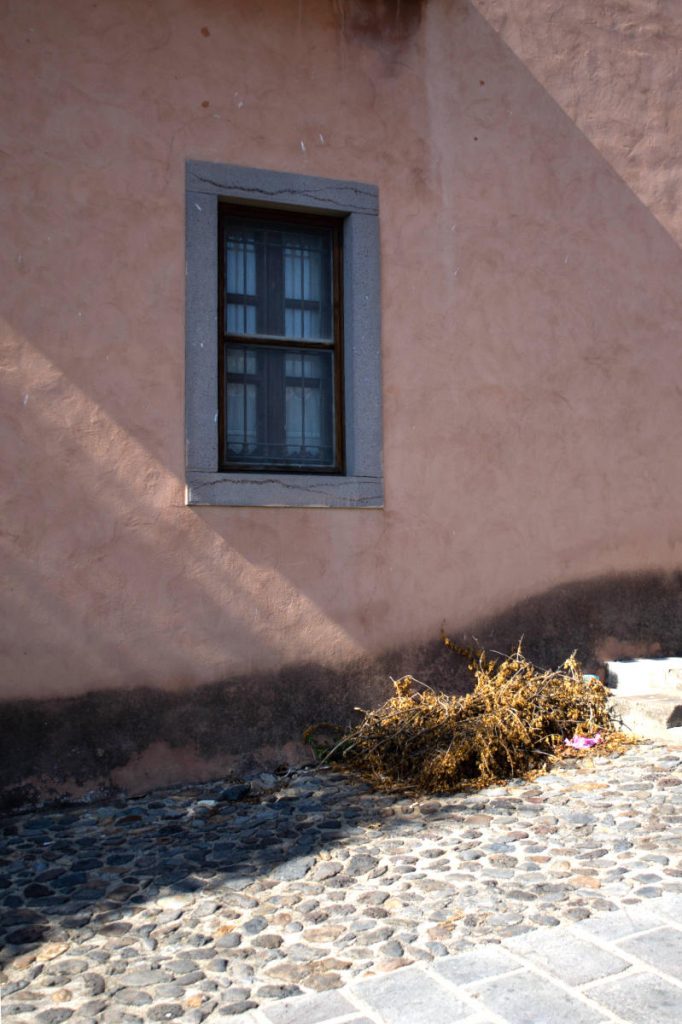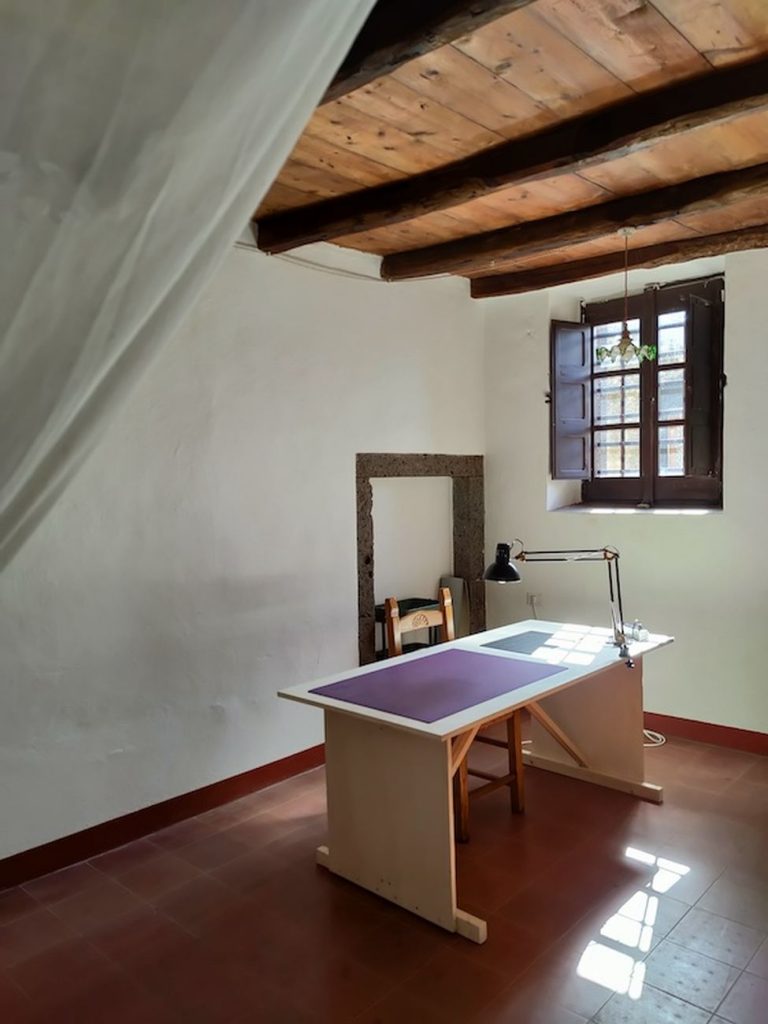Nocefresca is home, research, relationships, community

Francesca Sassu, CEO & Founder of Nocefresca, has succeeded in her aim of creating a permanent residency programme for visual artists, designers, writers and creative professionals from all over the world. We interviewed her about the Calcùra project.


Looking at your CV, one immediately notices the variety of experiences in 15 years of work: from arts management to curatorial work for different realities in Sardinia. We were wondering what experiences led you to develop a project like Nocefresca.
My past residency experiences were very different because they were within state entities or on behalf of non-profits, which lived off of public funding and were therefore episodic. They would then last one month, run out of funds and not be repeated. The following year they would start from zero elsewhere and with a different aim. I realised that I would start a project but after 1-2 months it would end. A kind of meteor, which for such small realities could also be unproductive.
Therefore I started to study a model that could be independent, freeing myself from this yoke (laughs) that would not allow me to work as I wanted to. This is why Nocefresca was born, which is not a cultural association, or a non-profit reality, but a start-up, an enterprise that must therefore stand on its own feet. Independent both from a cultural and economic point of view.
It was a very important choice for me, after years of working as a secretary for a cultural councillor in the town of Cagliari. Everyday I saw so many realities that came to ask for support from the institution, I empathised with them. Seeing so many of them made me reflect and so I decided to change, at the end of this work experience, by opening a business.
What values did you decide to base Nocefresca on, after facing so many realities? And why is it called that?
Well, the name has many meanings. The first is very instinctive and casual, coming from an experience of living in a Sardinian municipality called Nughedu Santa Vittoria. In Sardinian nughedu means ‘walnut‘ and in the garden of the residence there was a walnut tree from which fresh walnuts fell, something I had never eaten. And one of the artists had made a series of drawings on the walnut tree, observing its shape.
Obviously the walnut is shaped like the brain, but if you turn it over it is also shaped like the heart. So it struck me because Nocefresca wants to be a place of making ideas but also of connecting people, of creating community. I also liked the idea of the shell. Because Nocefresca is a safe place where the artist can experiment, allow himself to have a totally uncertain outcome in his creations.
Lastly, the walnut is also a natural element and the link with nature is very strong in Nocefresca, which is based in rural villages. The attempt is to focus attention on these realities and offer people, who live in large metropolises around the world, the chance to experience such a small place, in contact with nature and people.


Tell us more about the choice of rural areas, a very different context from an urban area in which to organize a residency. And about the link that is created between the local community, through the activities you organize, and the artists themselves. How is this connection created?
I chose rural areas because they give me much more pleasure than the city. In Cagliari, where I live, there is a wide range of cultural offerings, even if the fruition tends to be visited by people who are used to seeing a thousand things, including your exhibition. It is a fruition that is certainly more experienced, but also more bored. In the rural area, on the other hand, you still find a lot of interest.
The visitors who come have much more curiosity and sensitivity, and this personally gives me much more satisfaction. I like very much when art comes into contact with people who have had nothing to do with it, I think this creates special sparks.
Coming back to your question, I think that community involvement is there in many aspects. First of all, in the housing model we have designed for Nocefresca. In fact, the artists mainly sleep in the houses of the local people. So we created a network of hosts, of people who are sensitive to the project and host the artists during their residency period. These people are not just simple renters but also help the artists to integrate into everyday life in the village.
Then, regarding the offices, we took another space that allows us to have a contact with a local association and therefore a relationship with the territory. The cultural association Pepebianco, which owns the house we are in, becomes a point of reference for the artists. These two aspects are therefore a first step towards involvement.
Each artist develops different research, there are those who work with the territory, focusing their research on the landscape. Others, however, have actively involved citizens because the themes they dealt with required this.


Nocefresca has been active for about two years. In this period, have you found any recurring, urgent or otherwise returning concepts in the artists’ research and/or from the interaction with the communities themselves?
Maybe it is still a bit early. We have been active for two years, but in the first one there was the lockdown where we opted for online residencies. Whereas this year, 2021, was the first year that they were fully active. They have all been very different: from the interest in public space, to community living, to landscape, to weaving.
I can think of two artists who carry out completely different research. One is Marco Loi, who deals with photography and weaving and has brought these two media together through the computer codes of algorithms. The other is a Chilean abstract painter who was very inspired by traditional Sardinian weaving (Ramiro Peonveiga).
In this context, would you like to give us some examples of artistic projects that you consider particularly successful within Nocefresca?
One project that is particularly close to my heart is the one in collaboration with the Mancaspazio gallery. We have set up a partnership with them, as well as the Mancaspazio Nocefresca prize, which was created to give a Sardinian artist the opportunity to do a residency at Nocefresca, which costs would be funded by the gallery.
This would give the winning artist access to an international experience, with international artists, in his or her home territory. I was very interested in this aspect for several reasons. Firstly, the presence of a local artist is important for artists coming from outside, because it is an instant contact with the territory.
Secondly, because I know the situation of Sardinian and Italian artists. Unlike artists from other countries, they cannot take advantage of many opportunities, such as participating in residencies that are not financed by grants. This last point is important, because in the past I had only done residencies financed by public entities, and it was the first time I offered a paid residency.
In addition, I would like to gradually start collaborating with a private entity, in this case a gallery. The latter offers the artist the possibility of having a solo exhibition of the result of the residency and to see their work for sale. For an artist to have the opportunity to do a period of research, to connect with international artists, to have a link with a gallery, starts a process of growth. And for Marco Loi, in my opinion, this was the case.
These aspects were very important and Marco’s project is also particularly successful for me. It was a total change from his previous production, both in the field of photography and weaving. A hybrid project that I find particularly interesting.

What does Sardinia bring to an artist who comes from a completely different place? What does being in Sardinian territory bring to the project, and how does Nocefresca face the challenge of welcoming a cultural exchange in all respects?
If I consider the artists who have come to Milis, to the Nocefresca residency, I noticed that many of them have come from big cities. In fact they are driven by the search for a more human scale. Then certainly the helpfulness of the people who welcomed them, with whom they felt at home. This is because our hosts are people who have an interest in coming into contact with the artist.
This year we had an architect (Zenovia Toloudi). Her research develops on issues related to public space, how to live it, and how in the United States this is in crisis. So from the States it came to the Mediterranean, to Sardinia, to a village, to draw something from here. Here, public space perhaps still has meaning. It is outside the house when I sit and chat with my neighbour or in the village square, where there is also a relationship.
There are many reasons: certainly geological and archaeological antiquity, with all the cultures that have been present, is an aspect that interests many. It may sound banal to say ‘feeling at home’, but in the life of an artist – as in the life of anyone – you can carry out a cultural project but if there is no environment of empathy, of communication, the results would not be the same.
